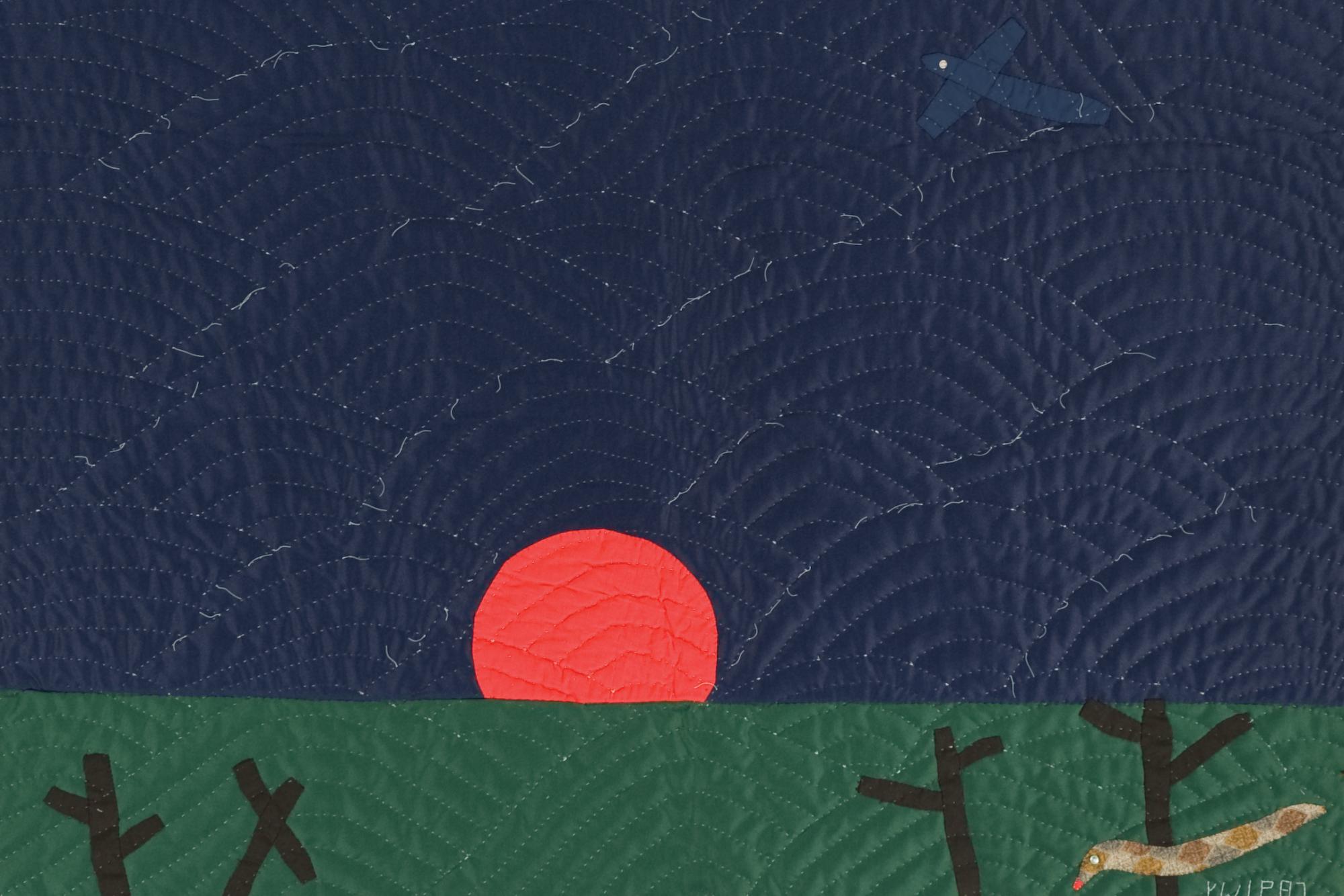
Yvonne Wells: Quilted Messages
Oct 7, 2011-Feb 26, 2012

Yvonne Wells taught physical education in public schools for most of her adult life. But, in 1979, while her Tuscaloosa, Alabama, home was undergoing major renovations, she had to sit near the fireplace to keep warm. She decided to make her first quilt to warm her legs until the heating system was restored. With knowledge of how her mother, many years before, made utility quilts—the kind that were “made in the morning and used [th]at night”—Wells made her simple pieced quilt. She liked her quilt and the experience inspired her to make story and picture quilts to express the messages in her heart. Wells stated in a recent interview, “What my head sees, my heart feels, my hand creates.” Wells is African American, but does not use African American quiltmaker as her primary identity.
For her, the term glosses over the individual vision expressed in her work. Instead, Wells calls herself an artist who makes folk art and her medium is quilts. Wells’ quilts remind us that individual makers must be carefully studied so their work is understood first as an individual expression before establishing their place among the broader scope of African American and American quiltmaking